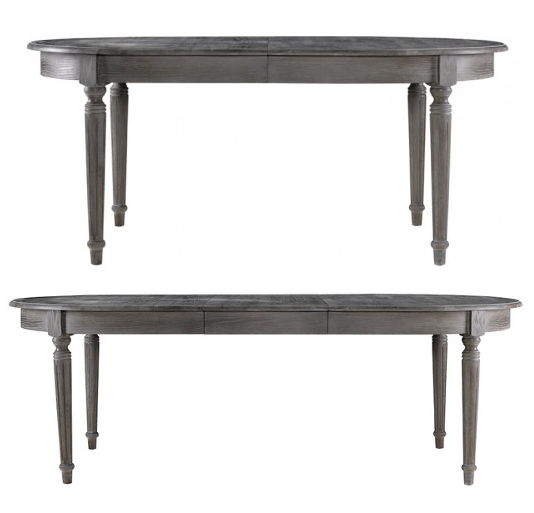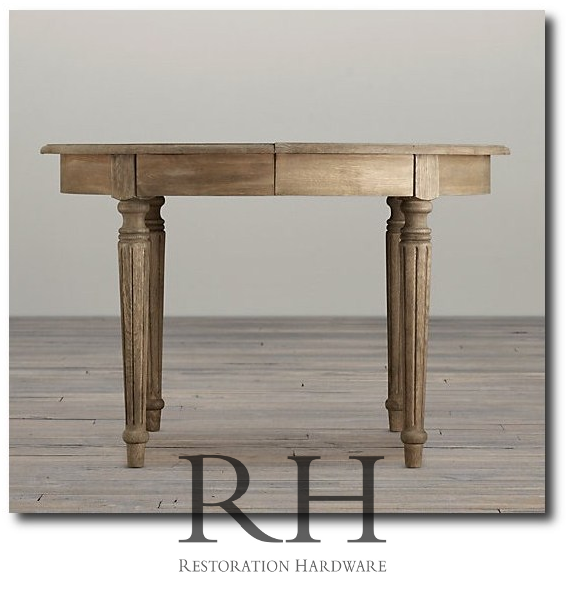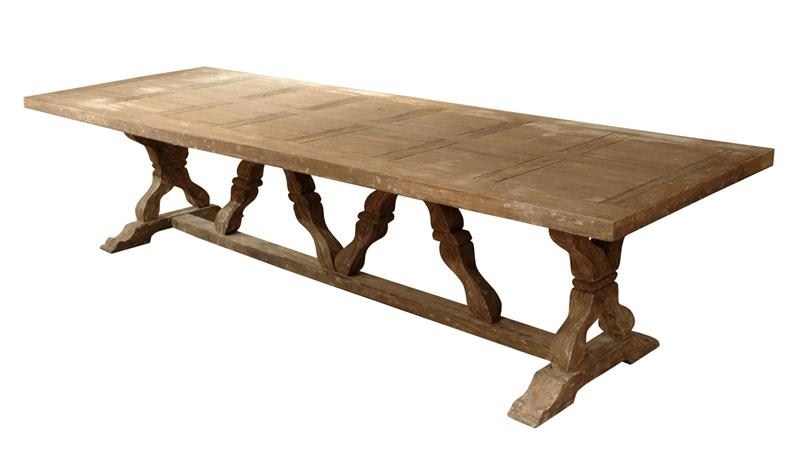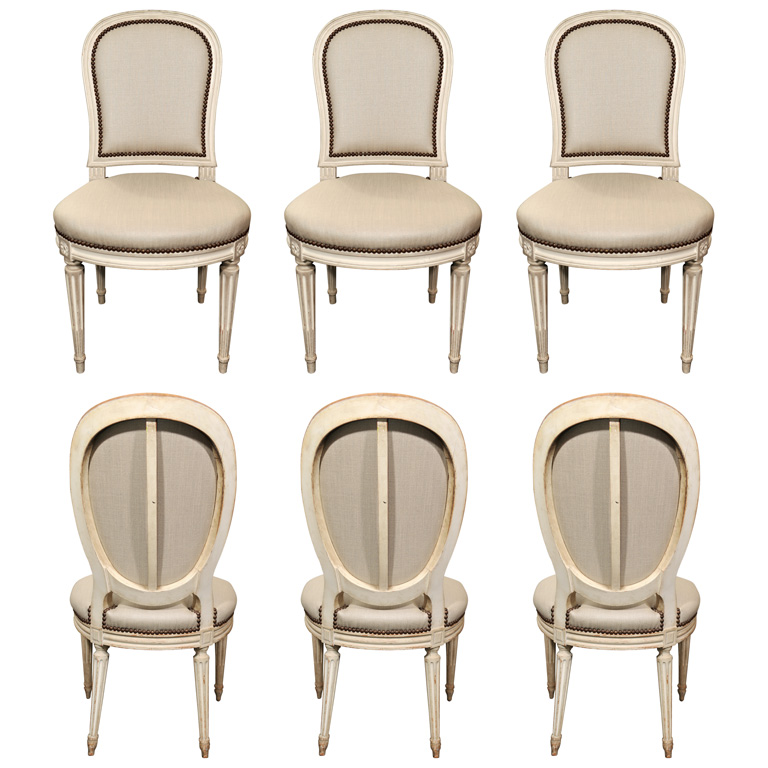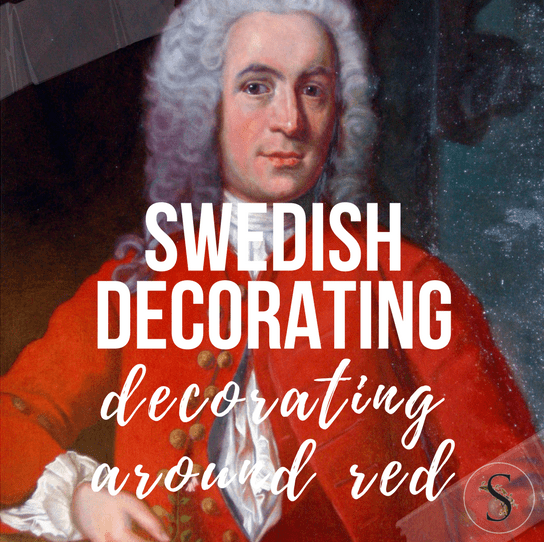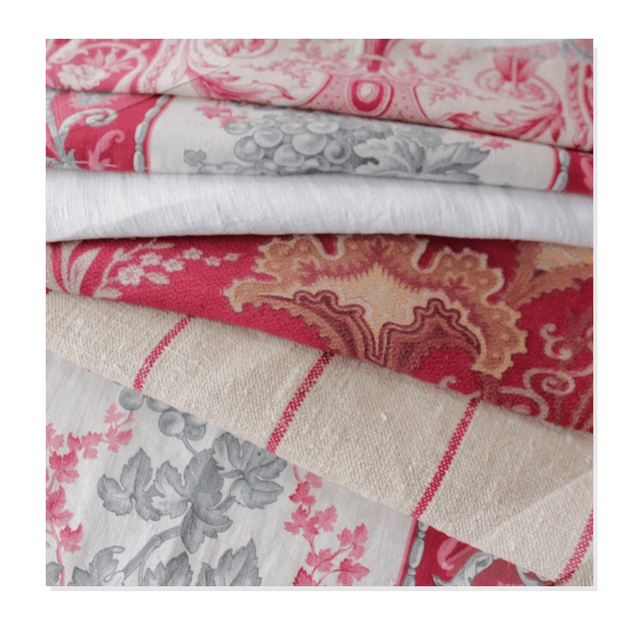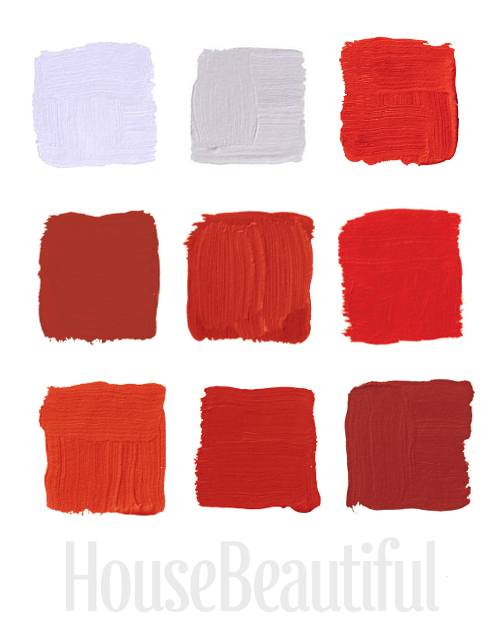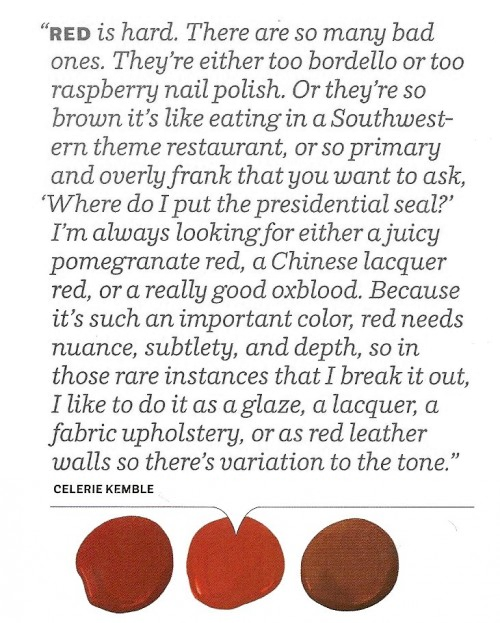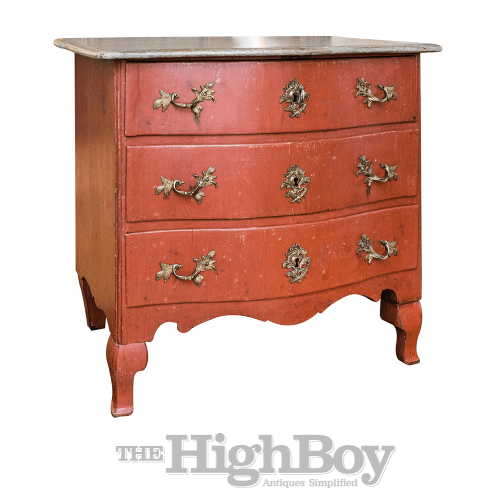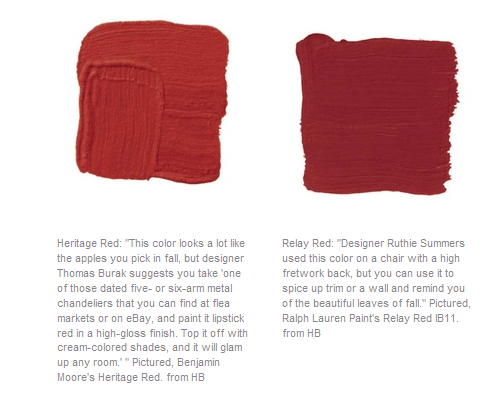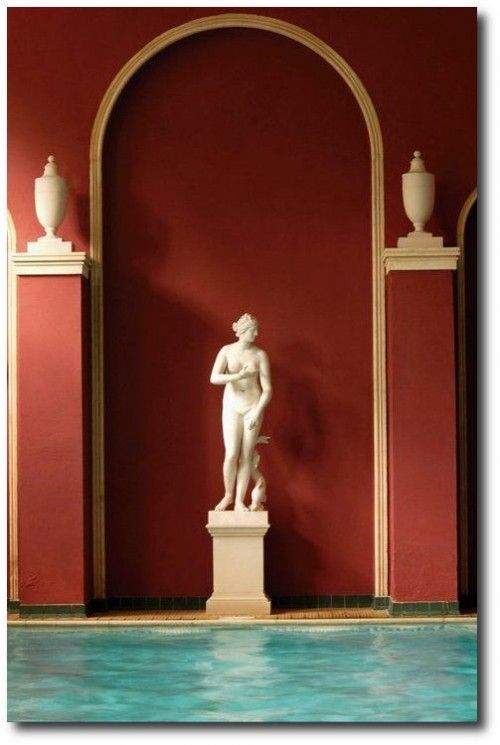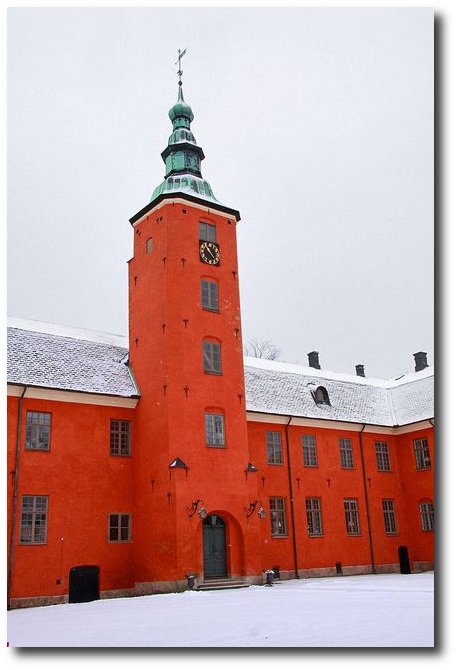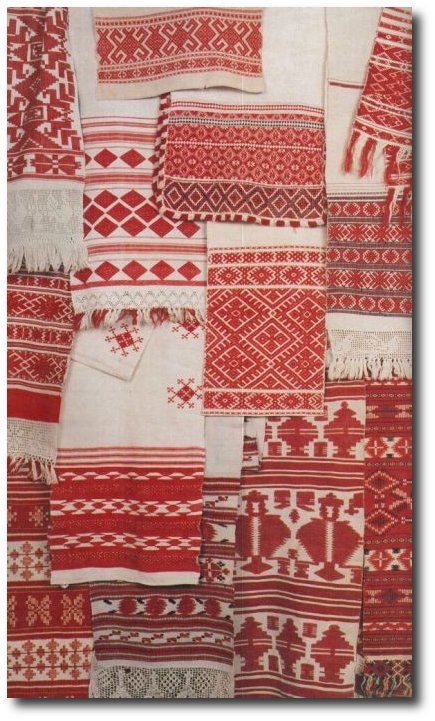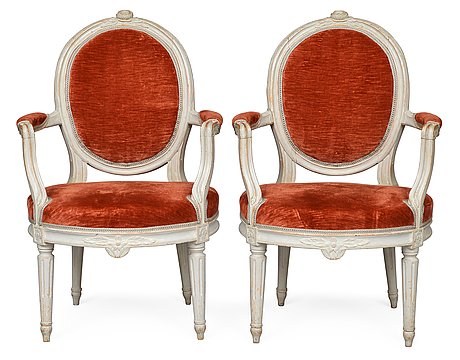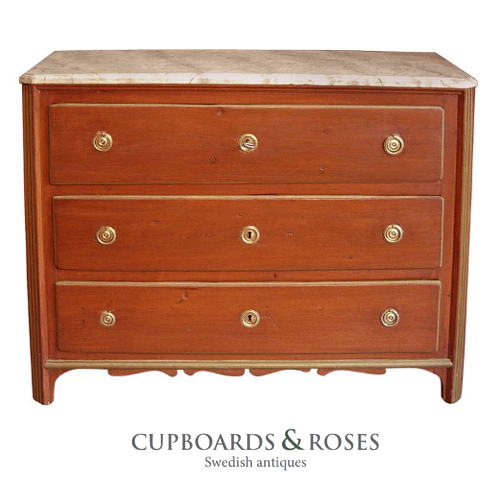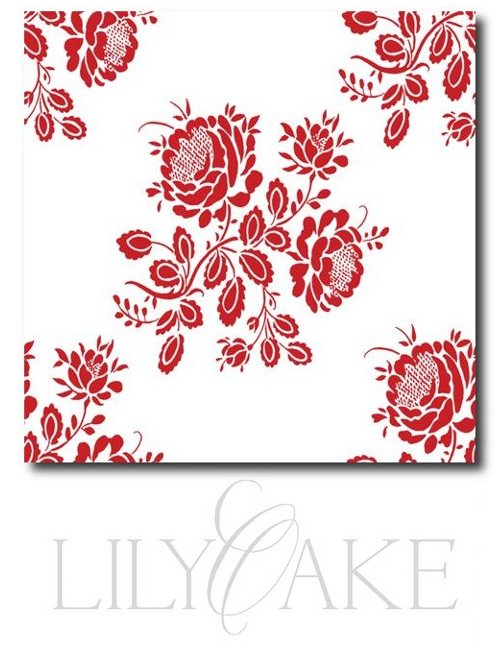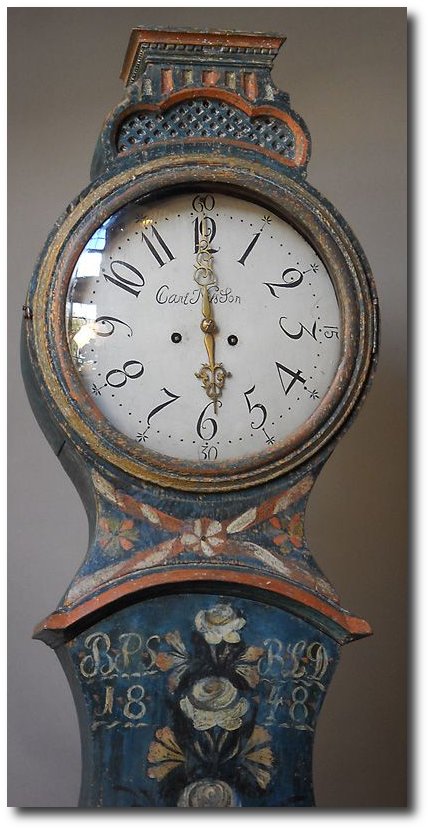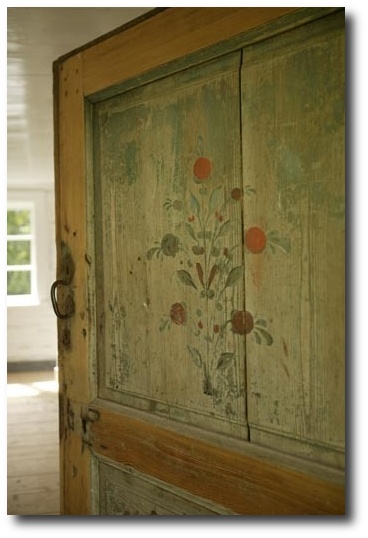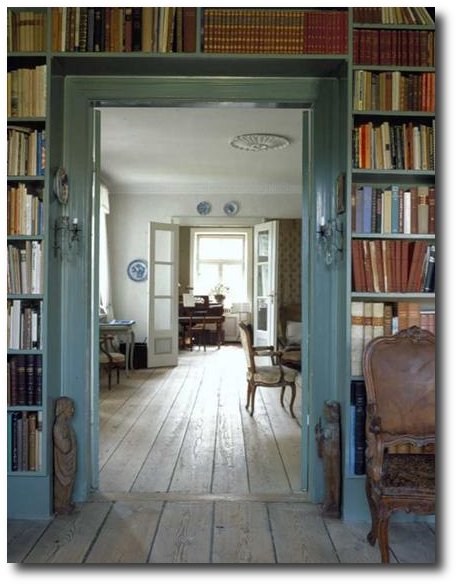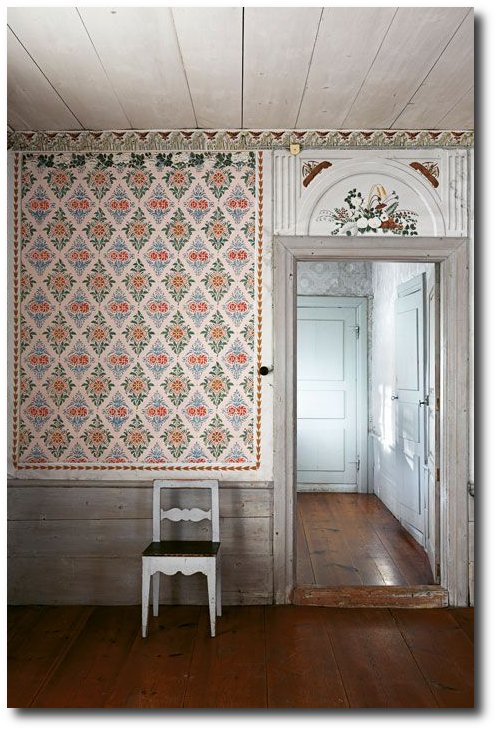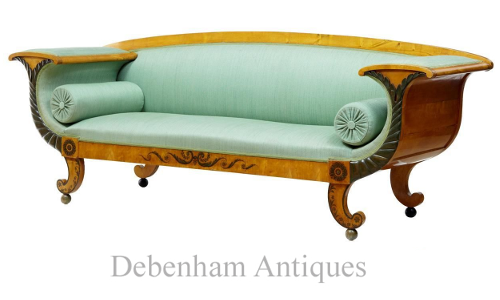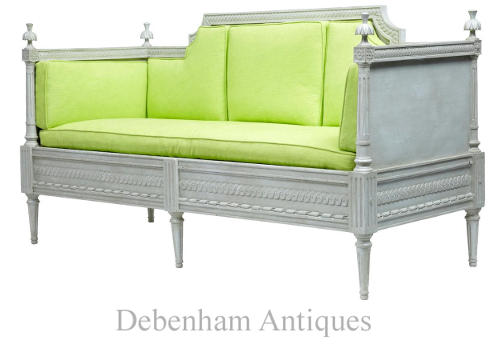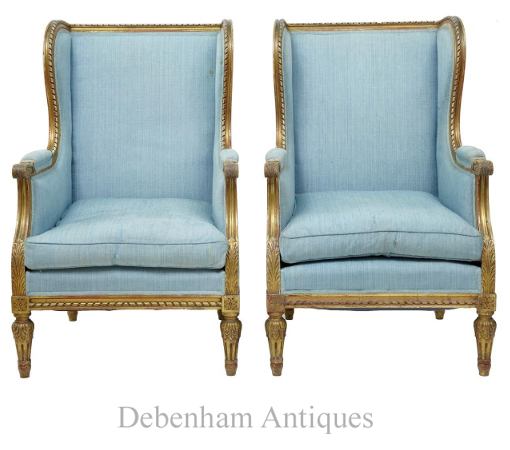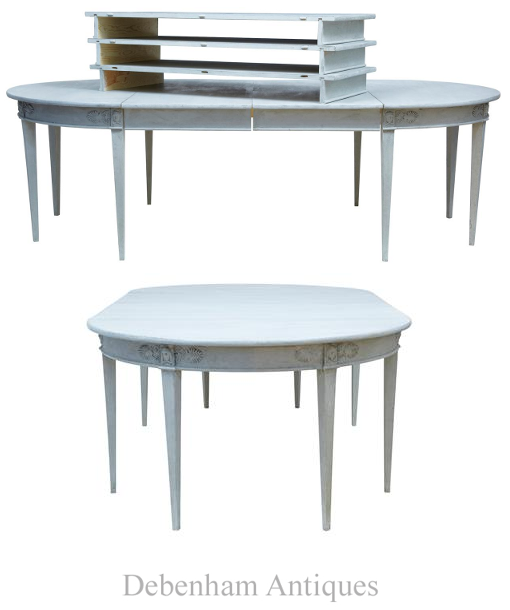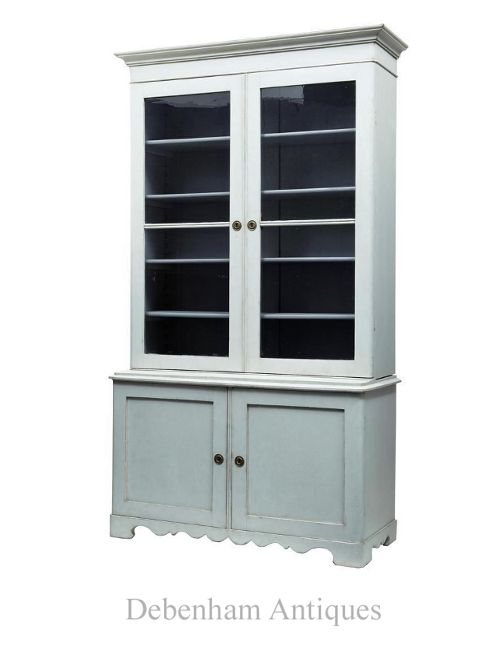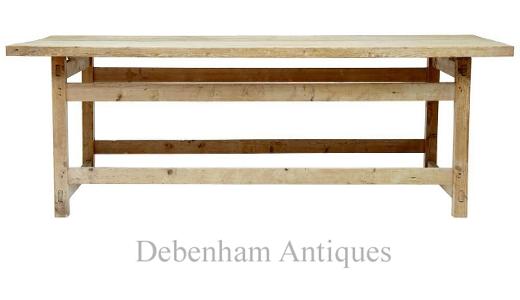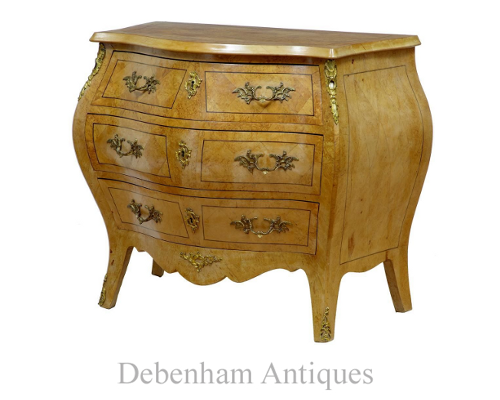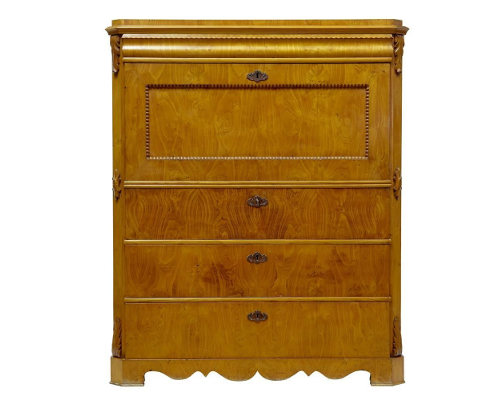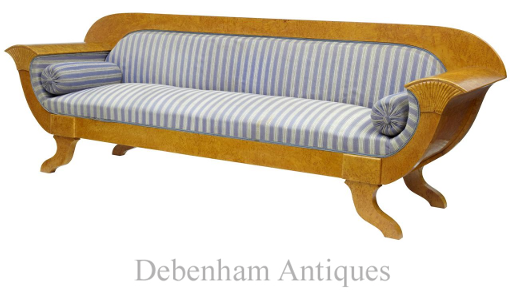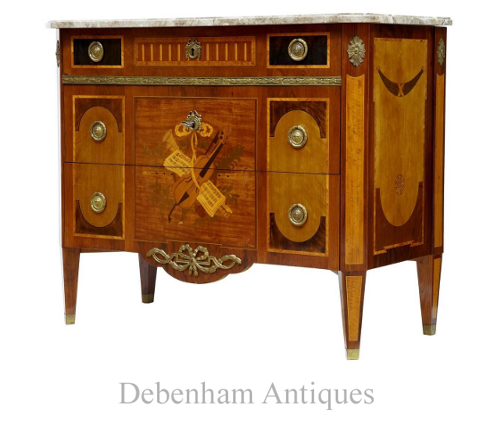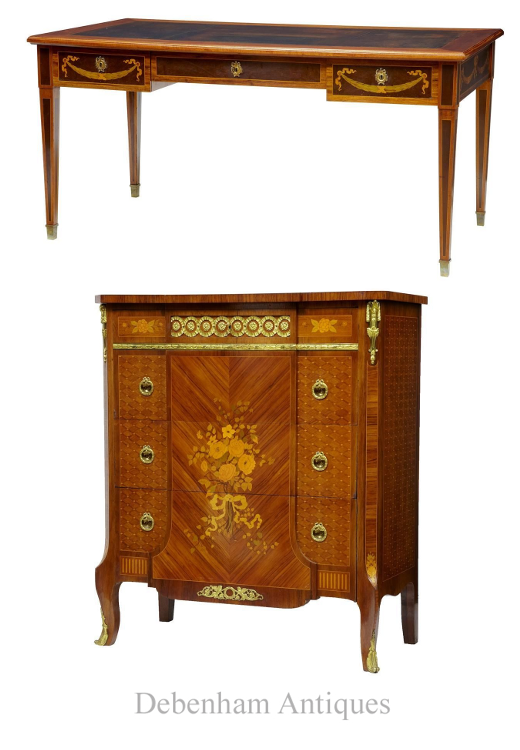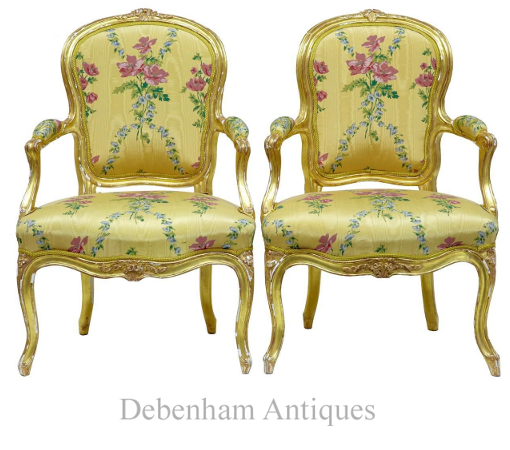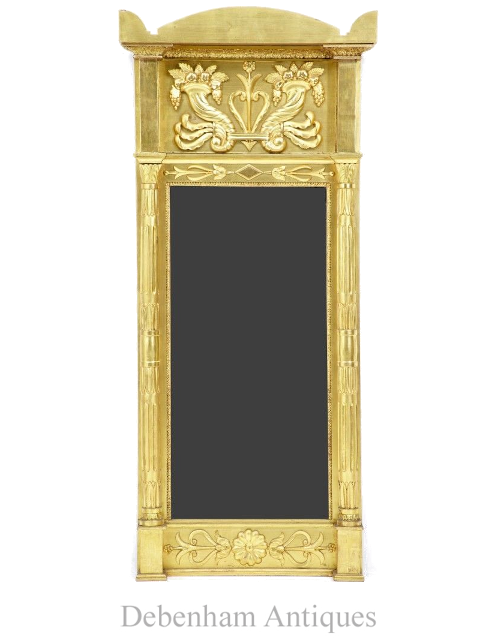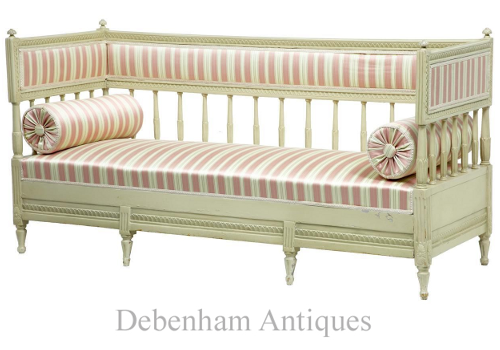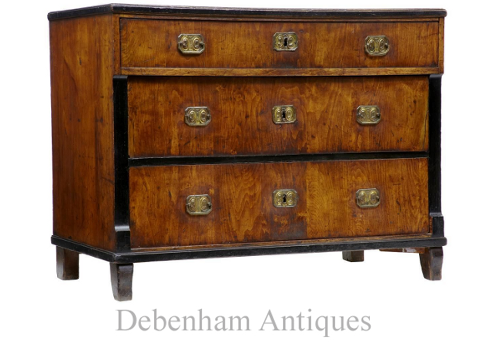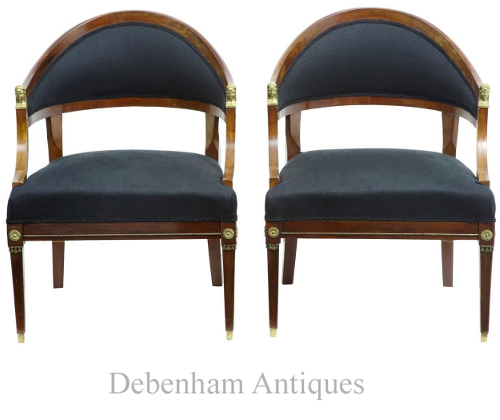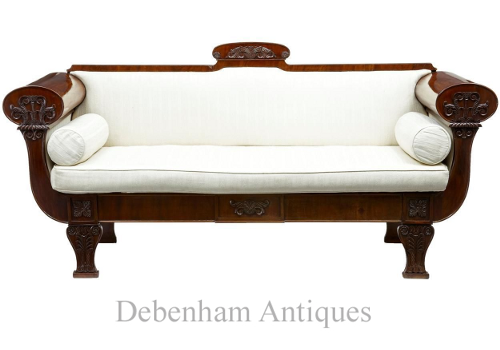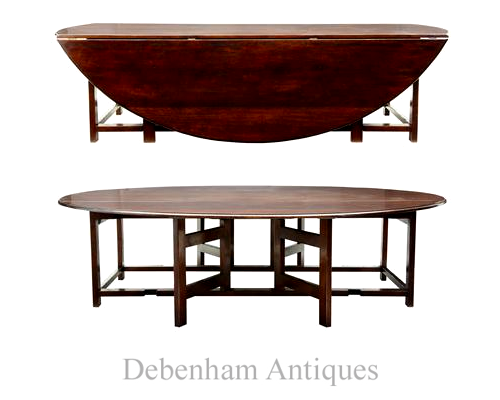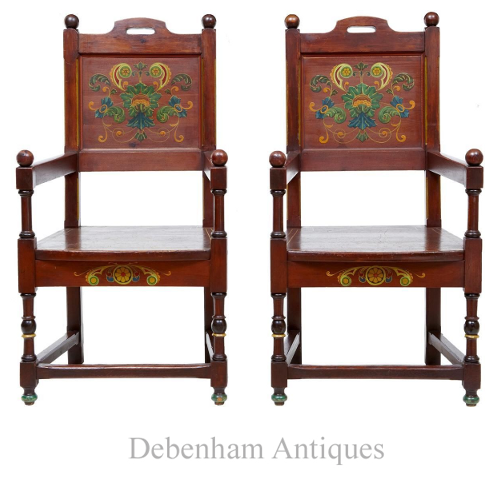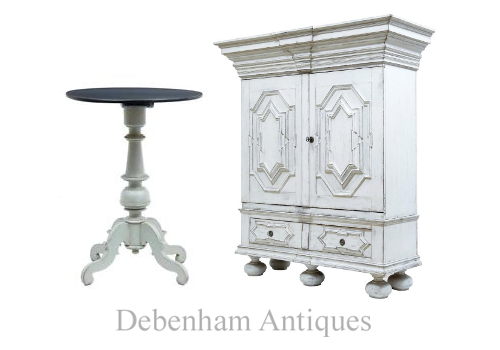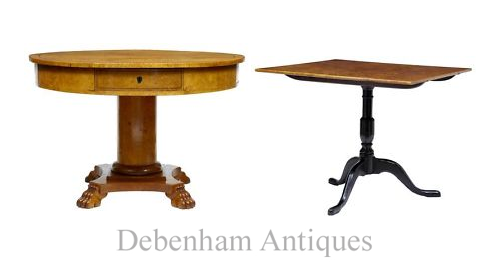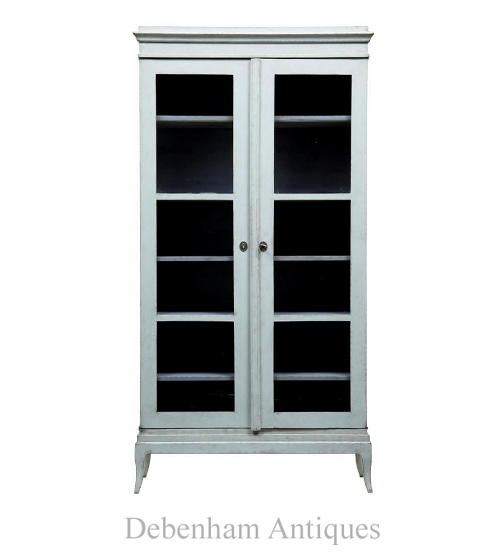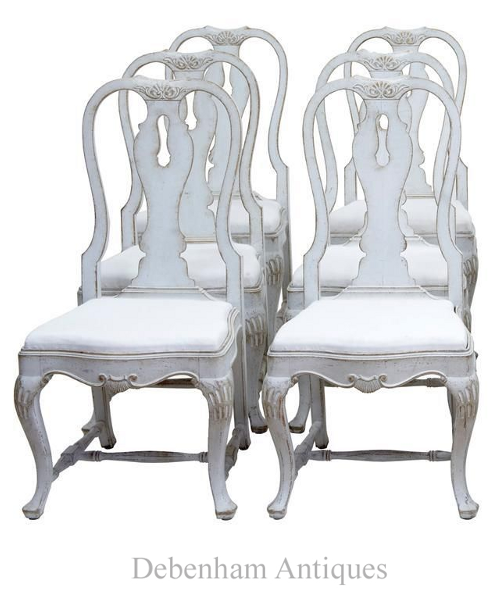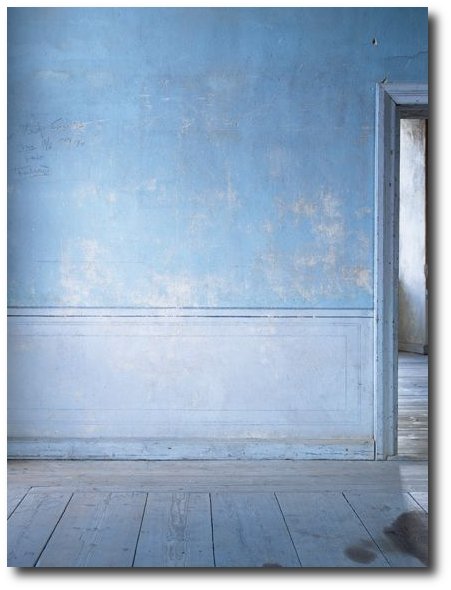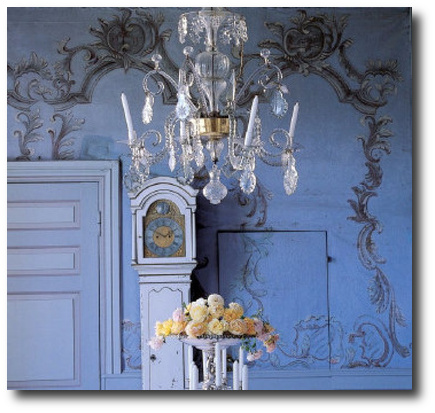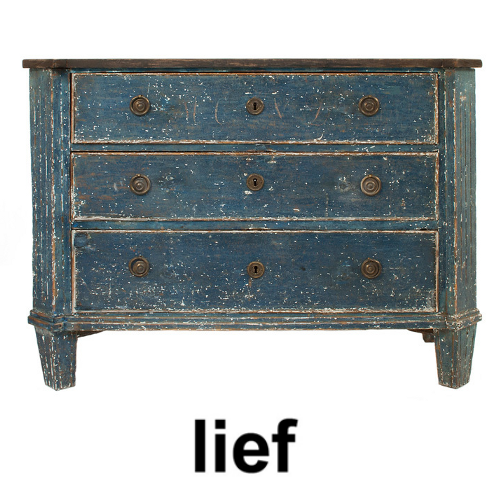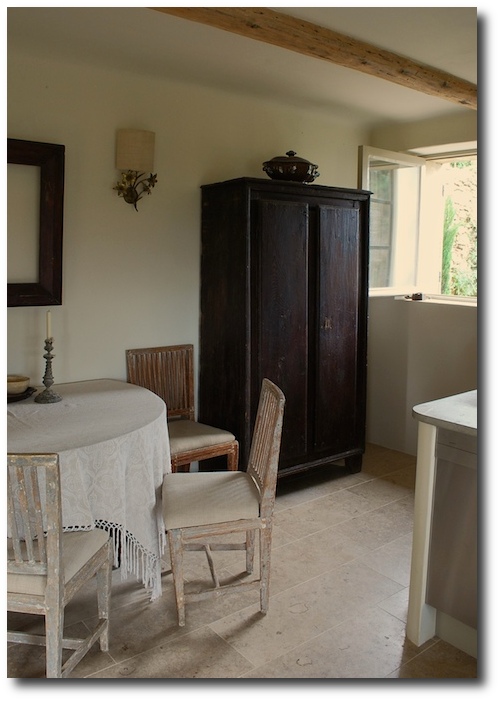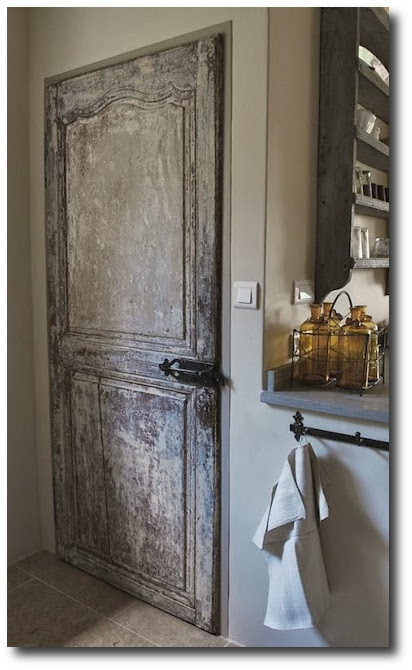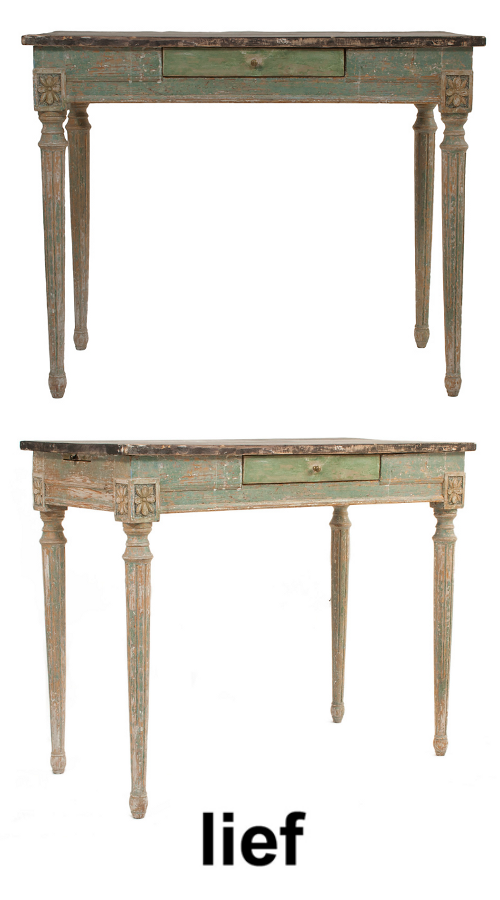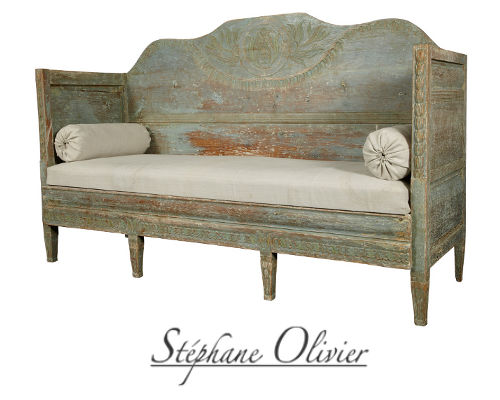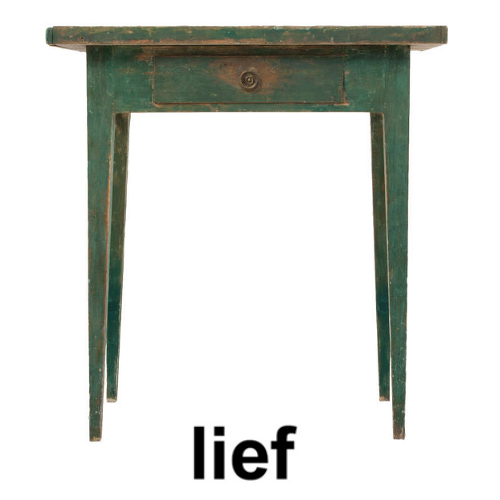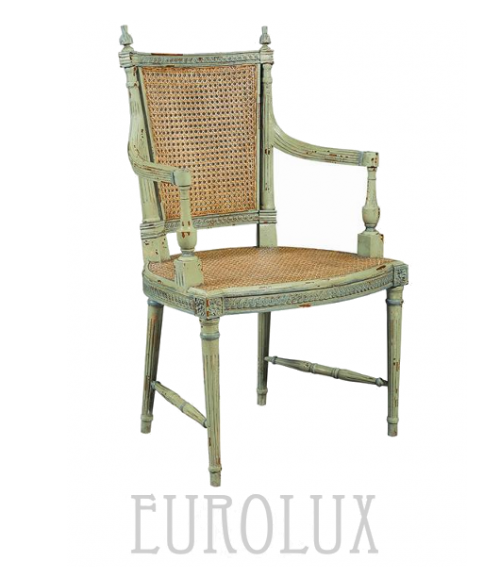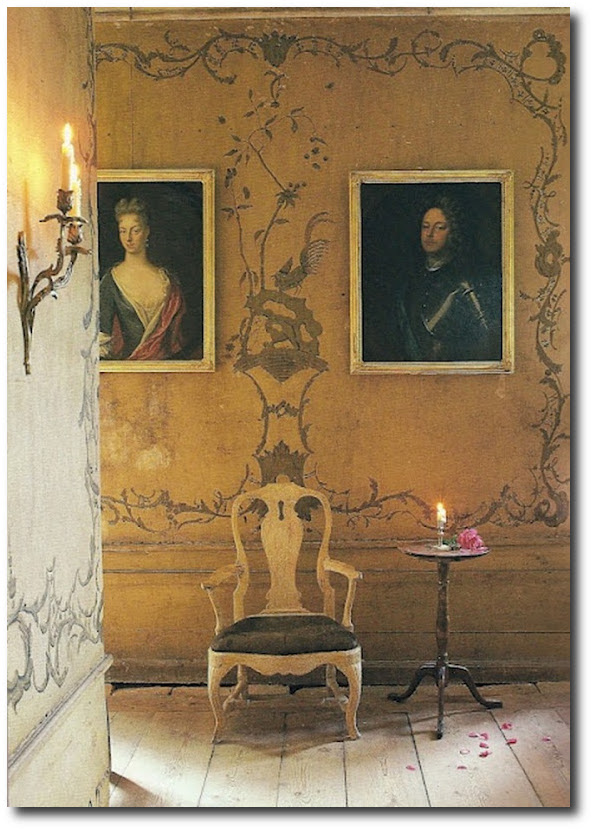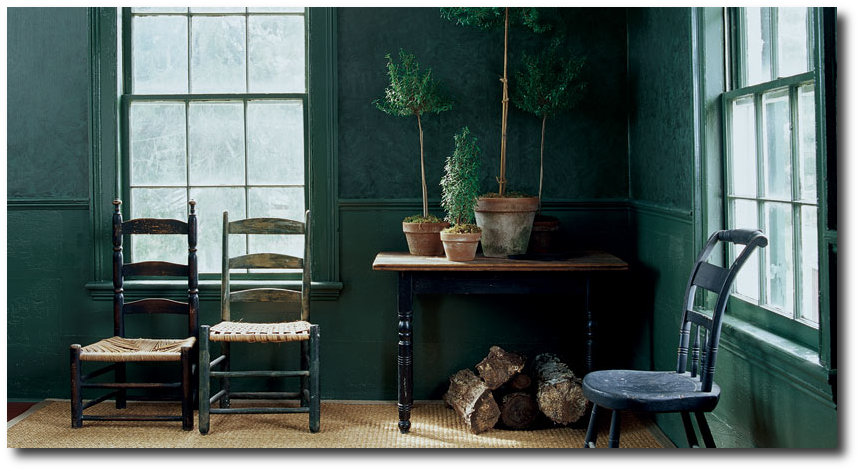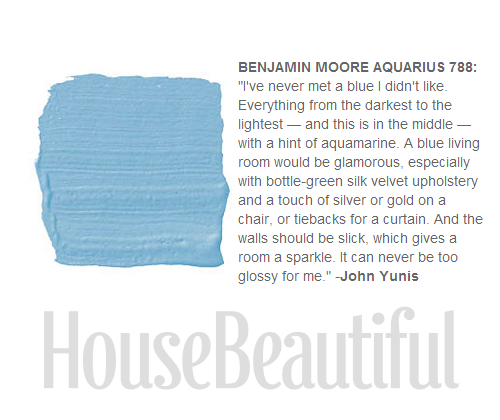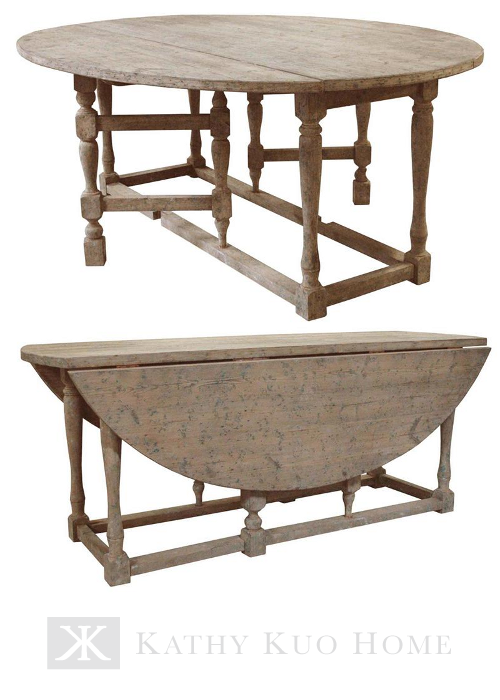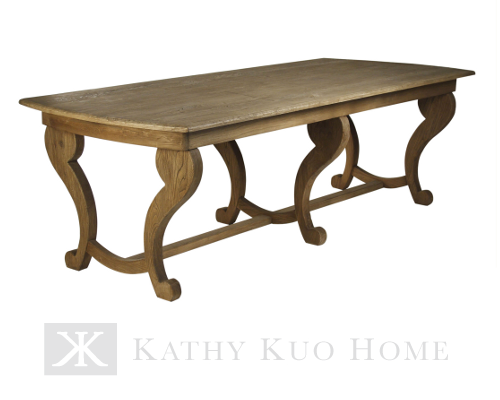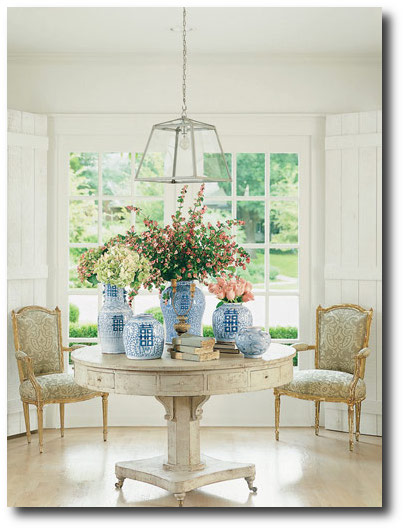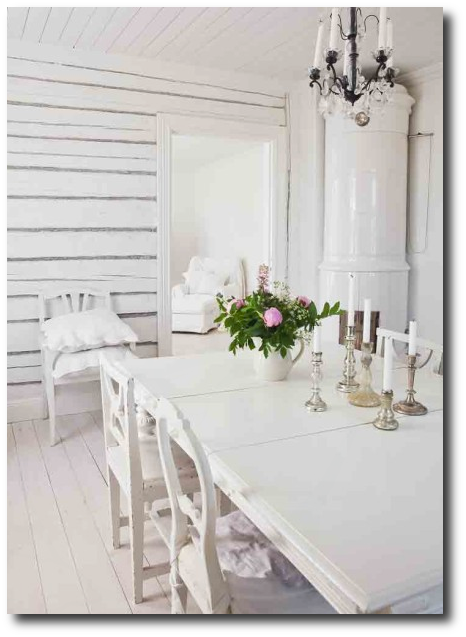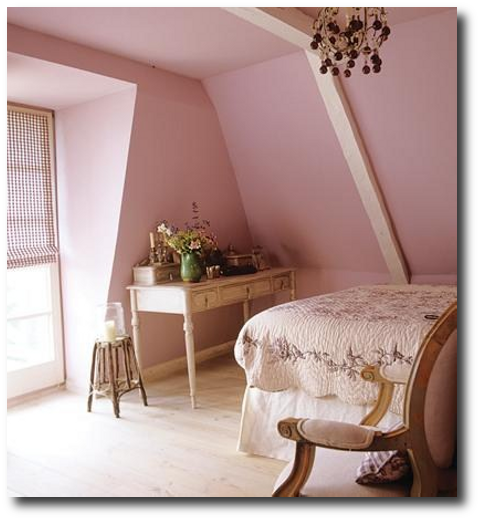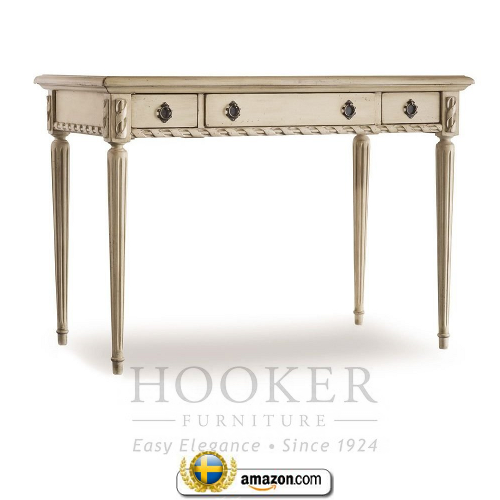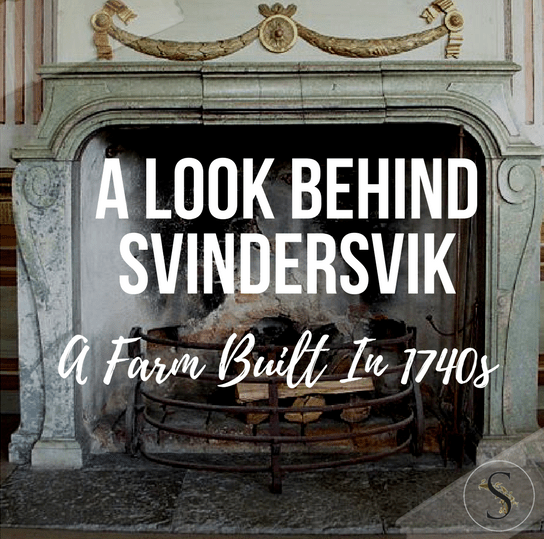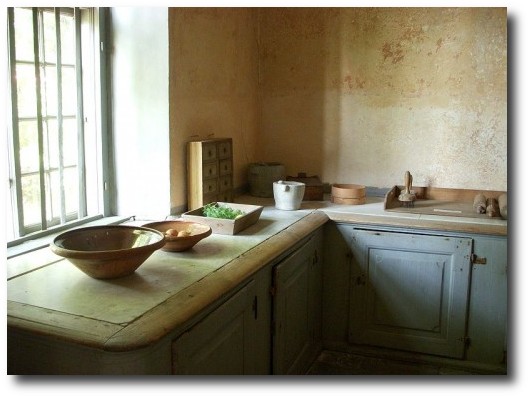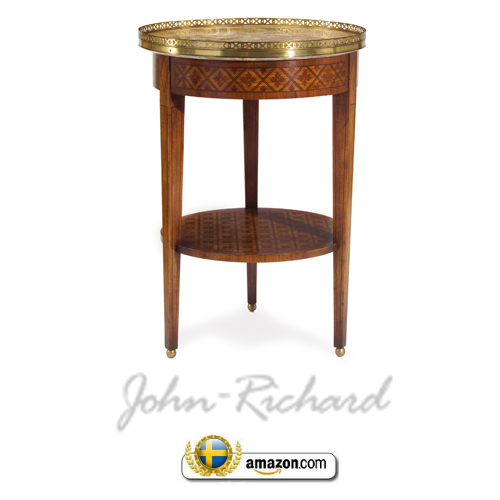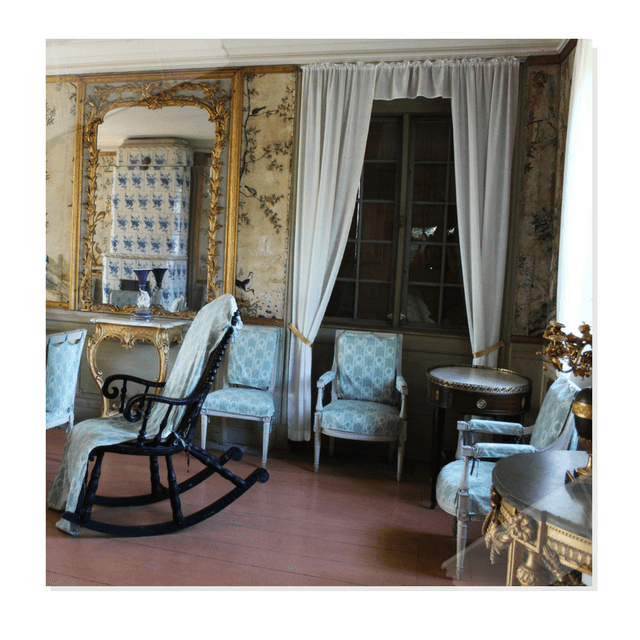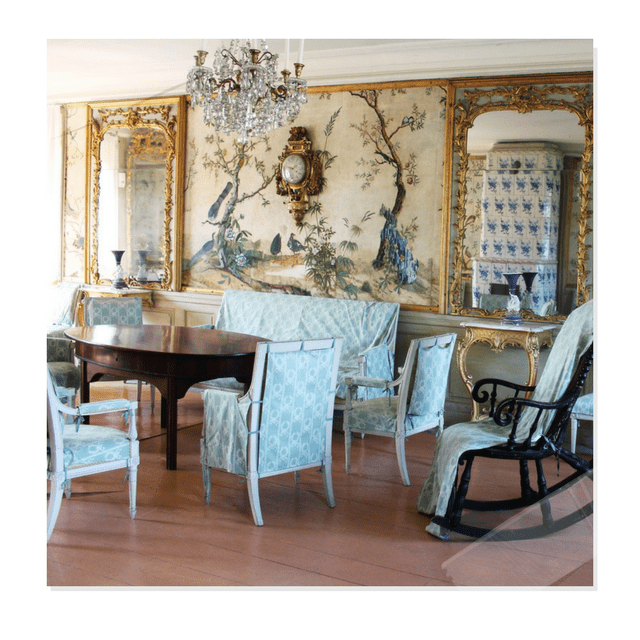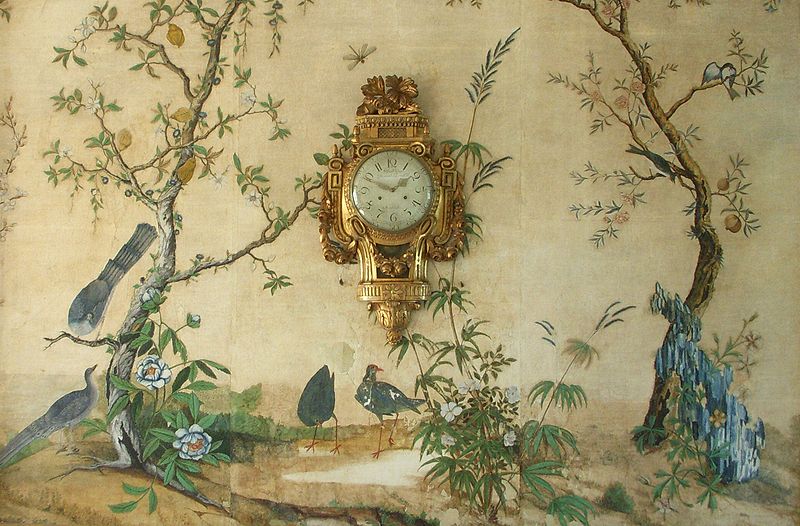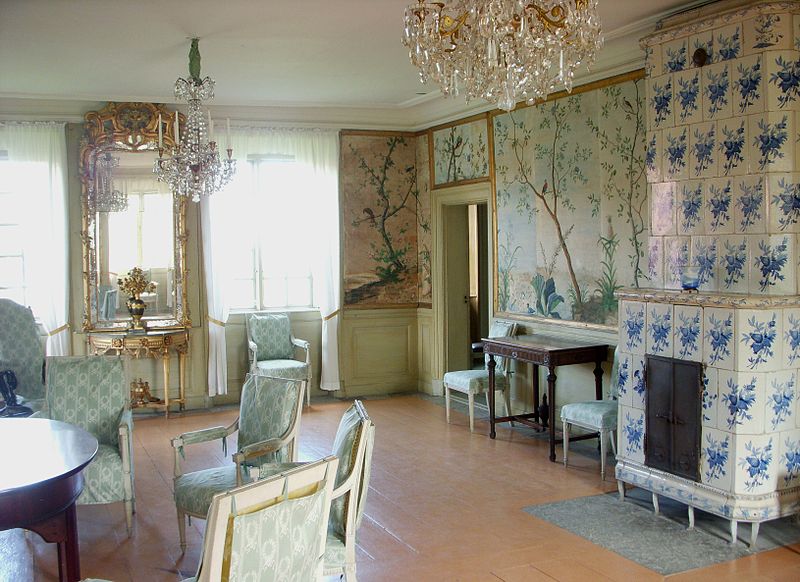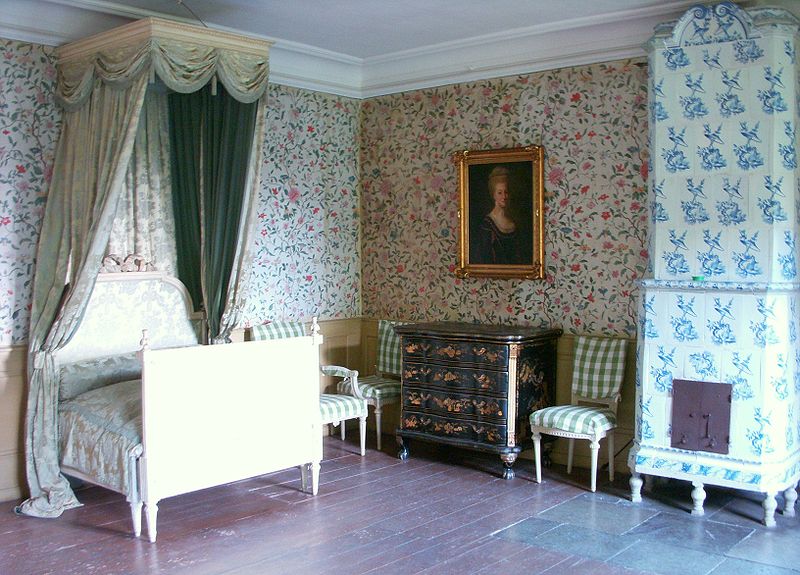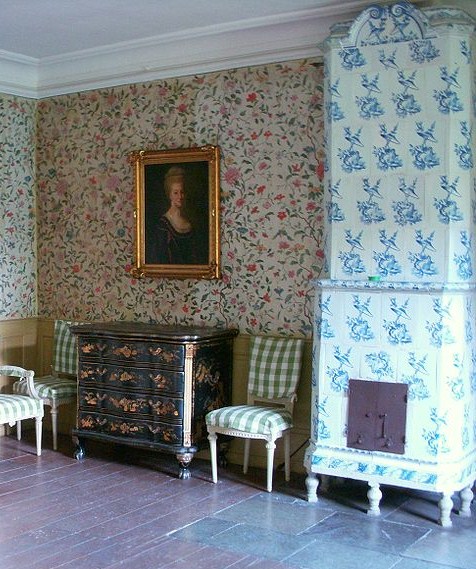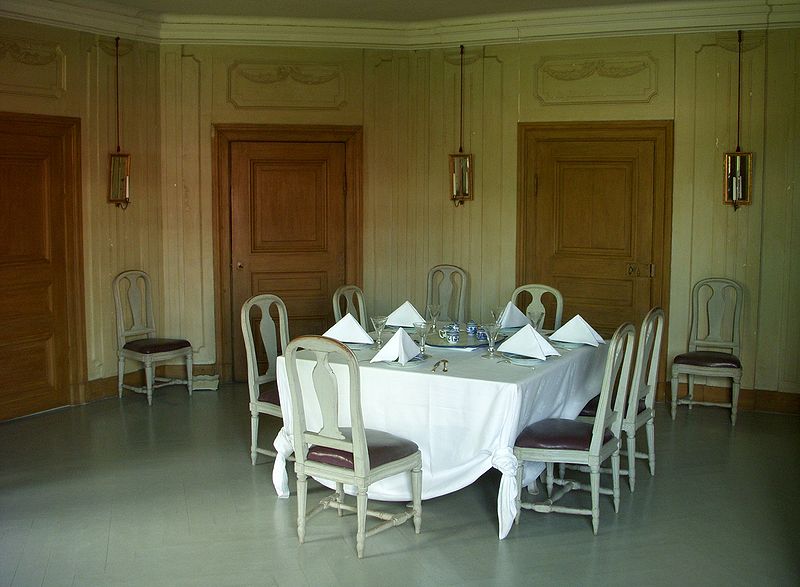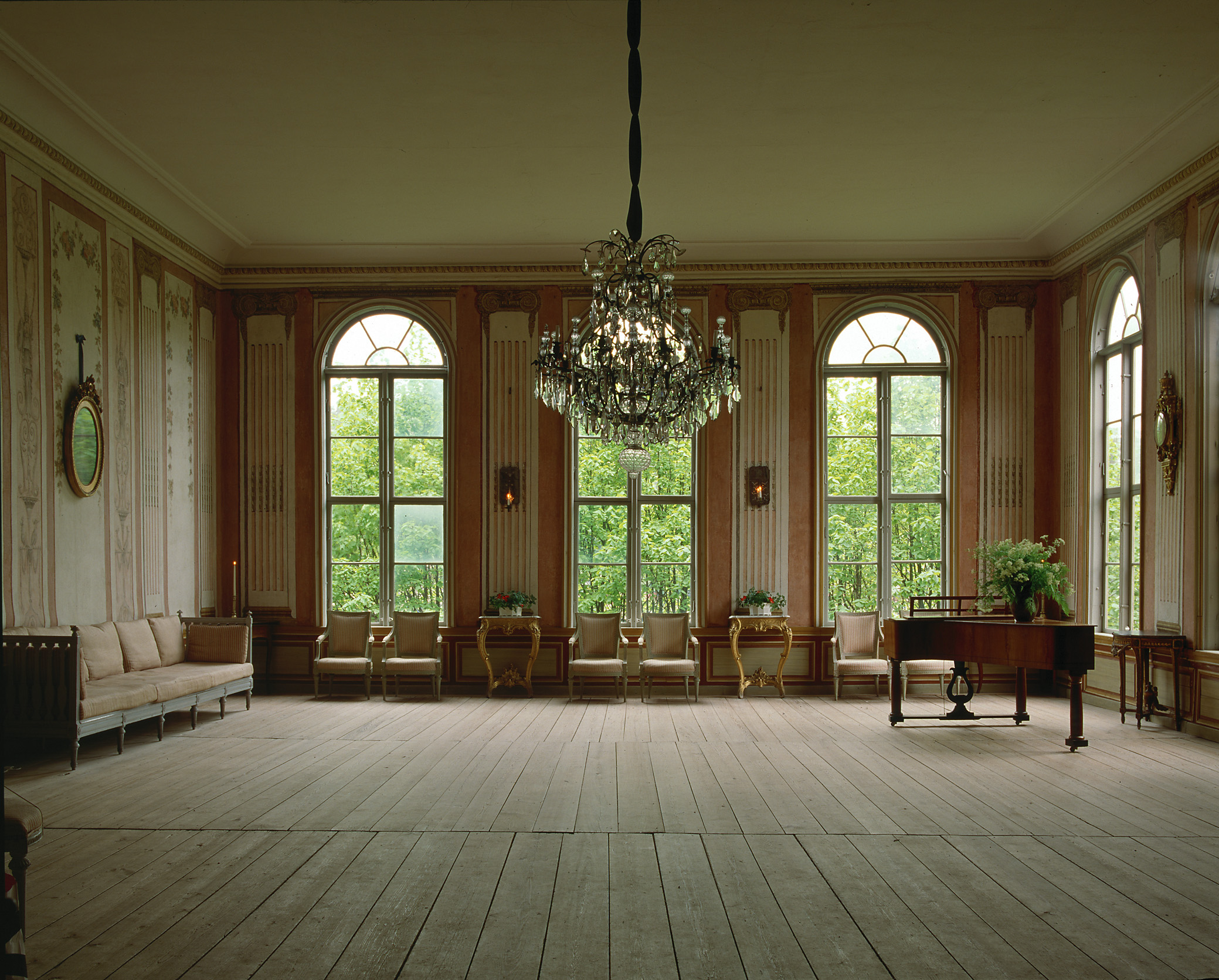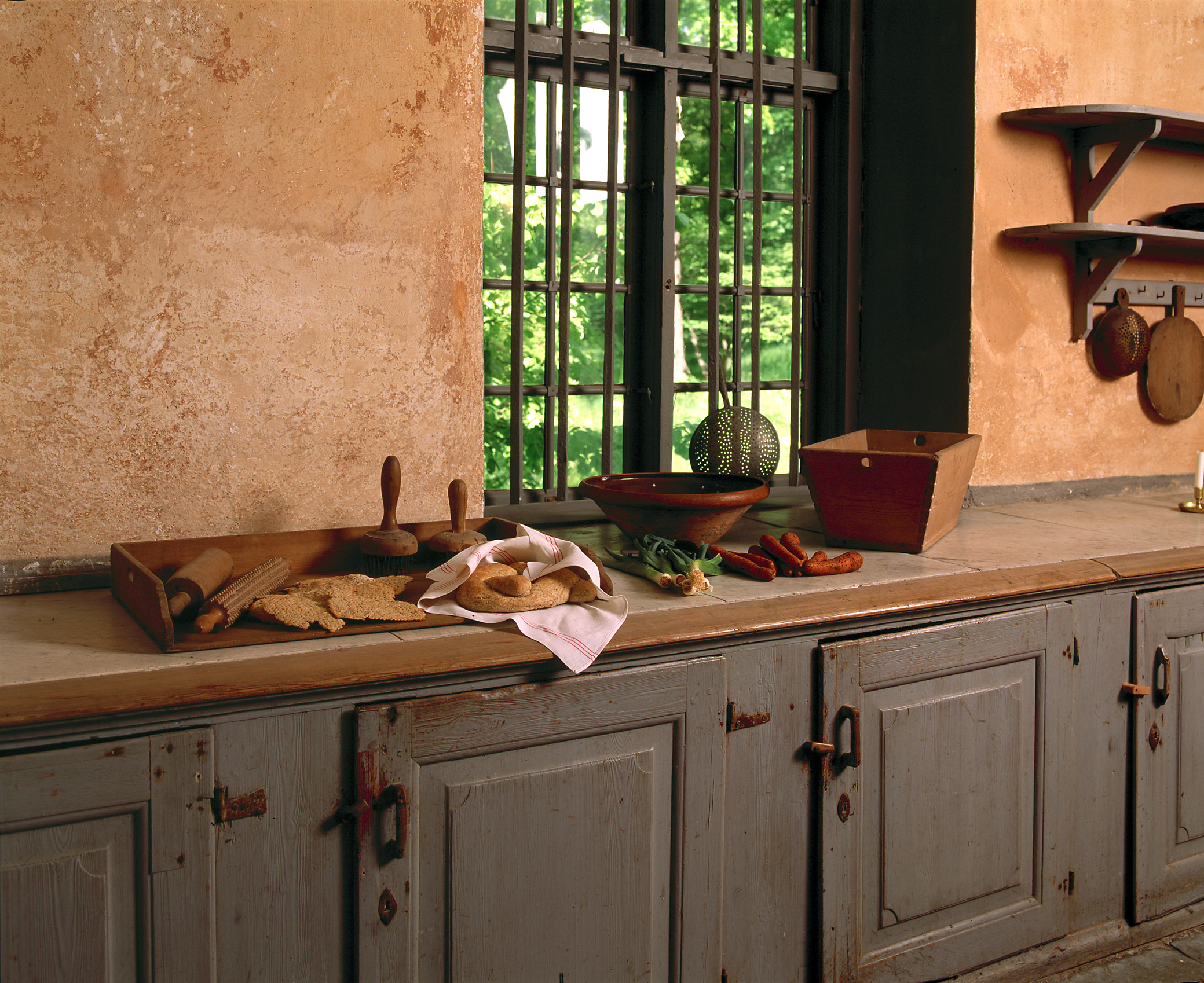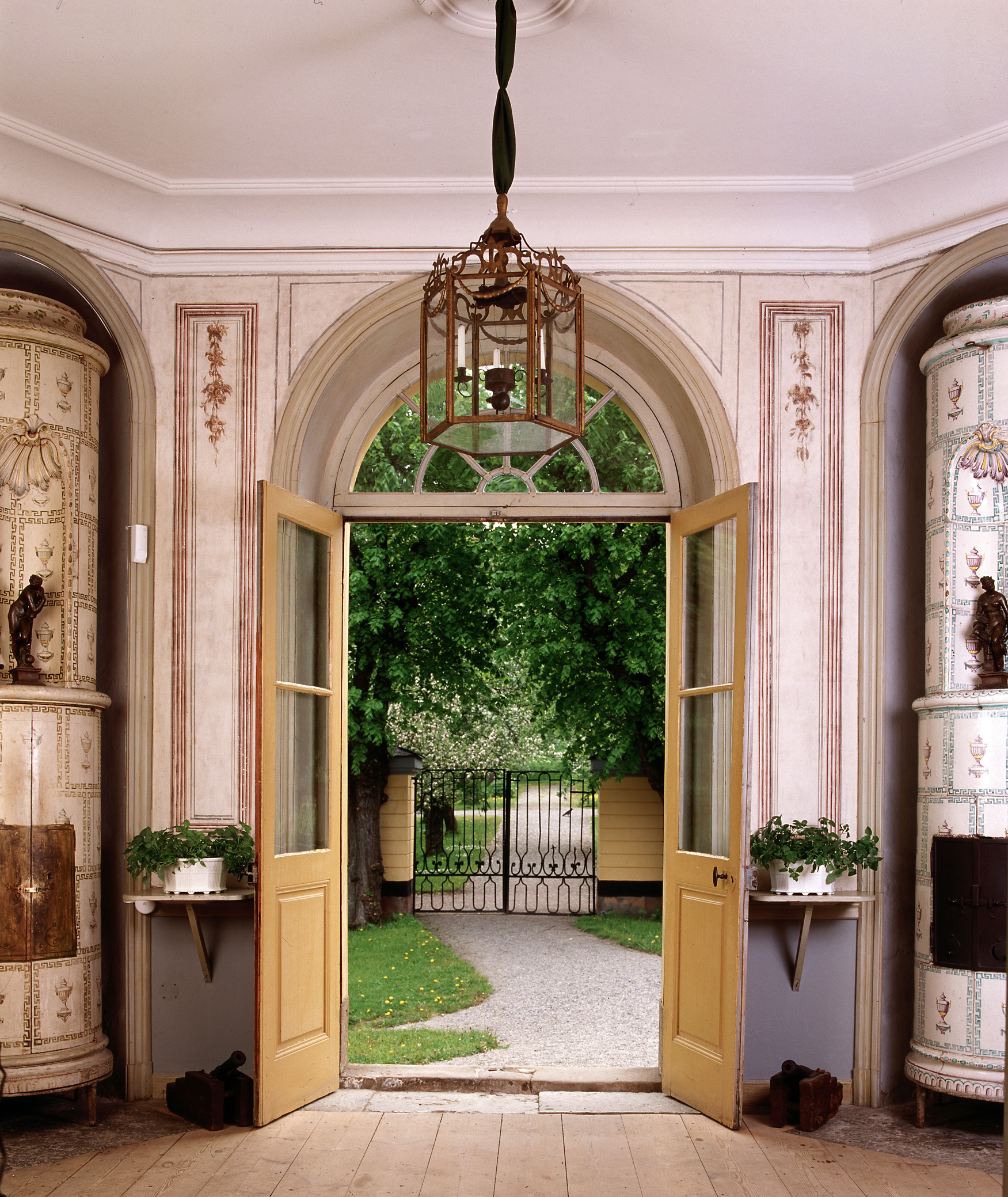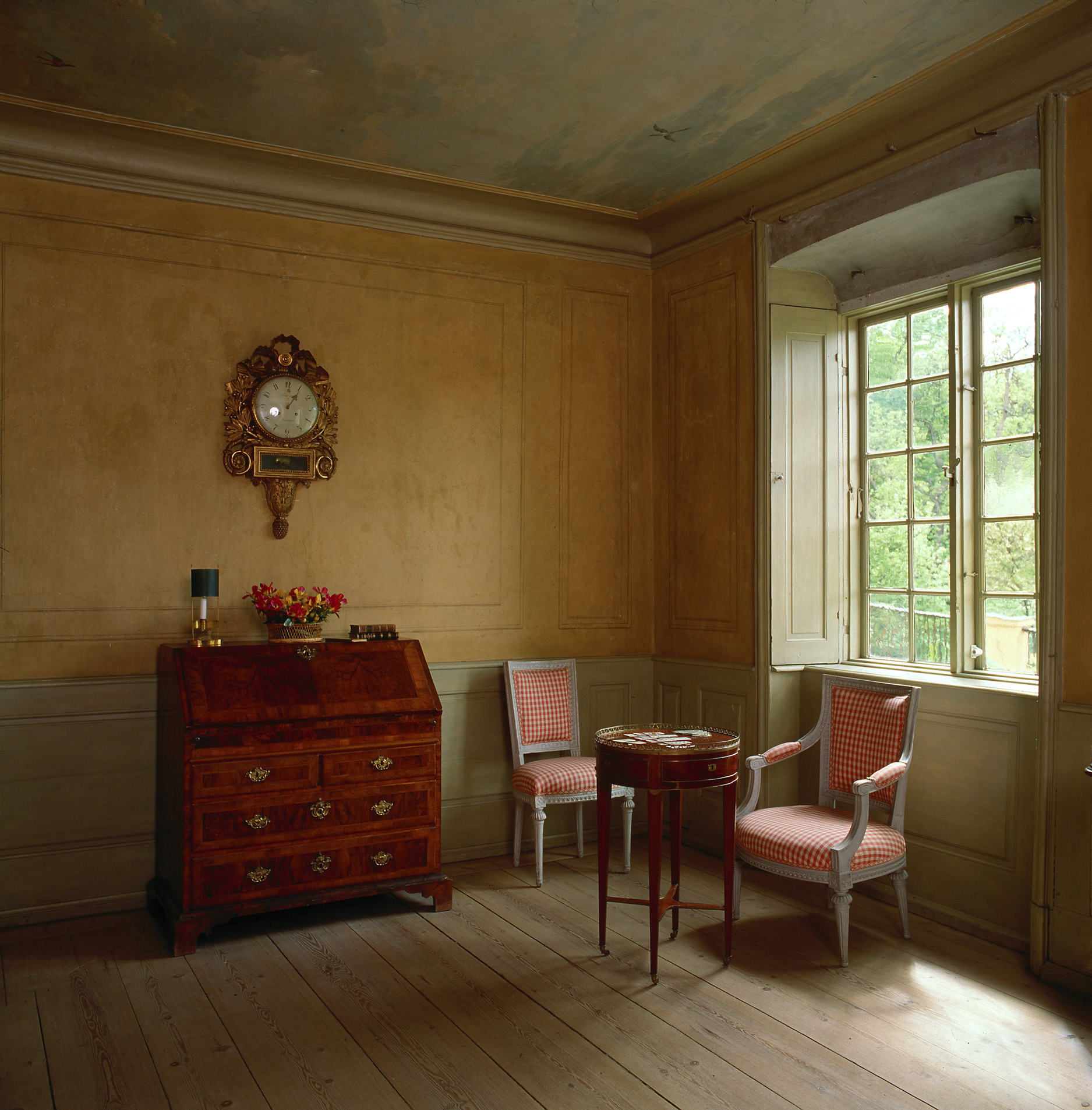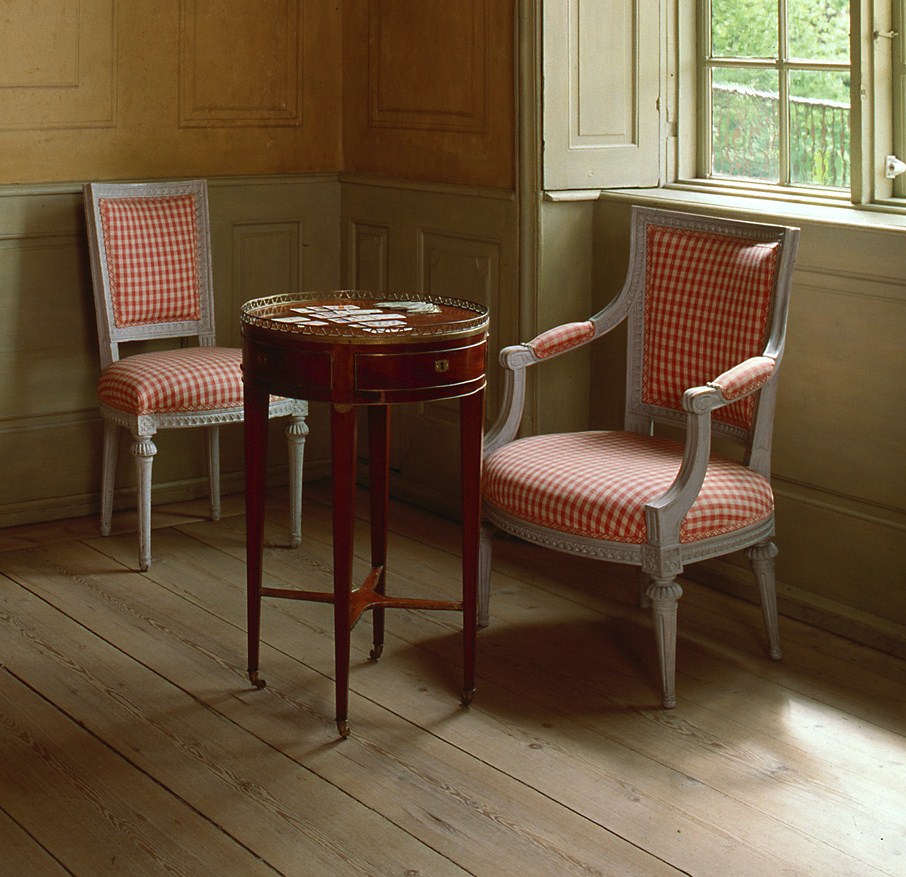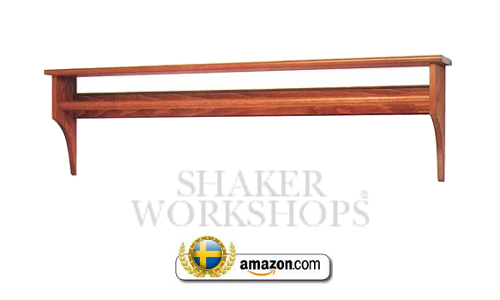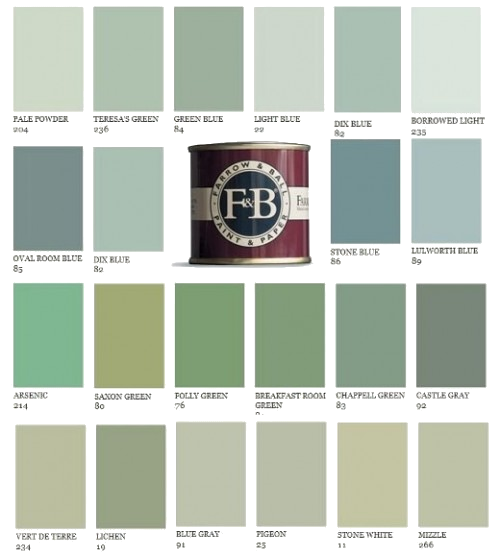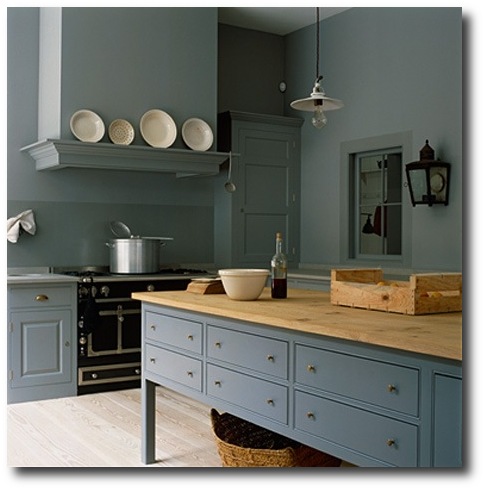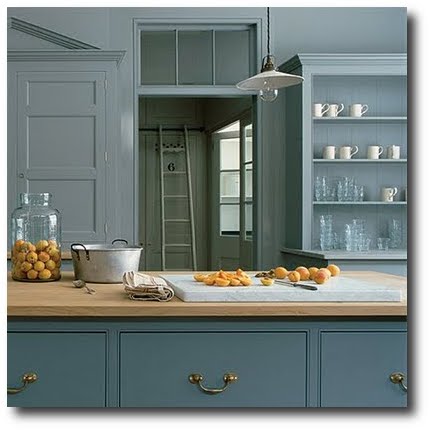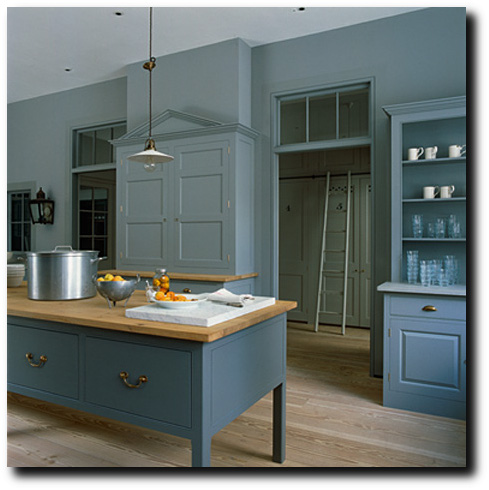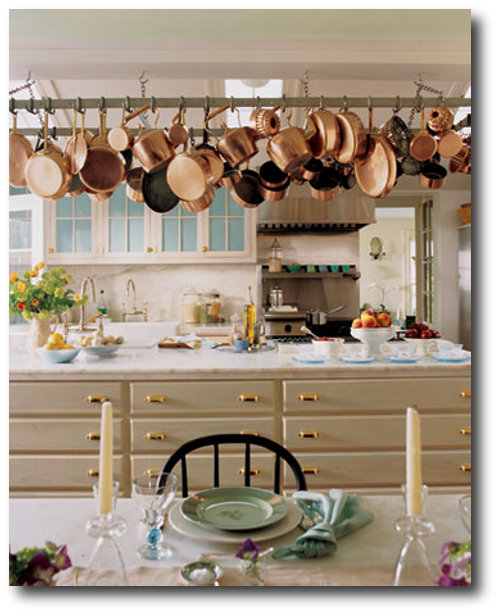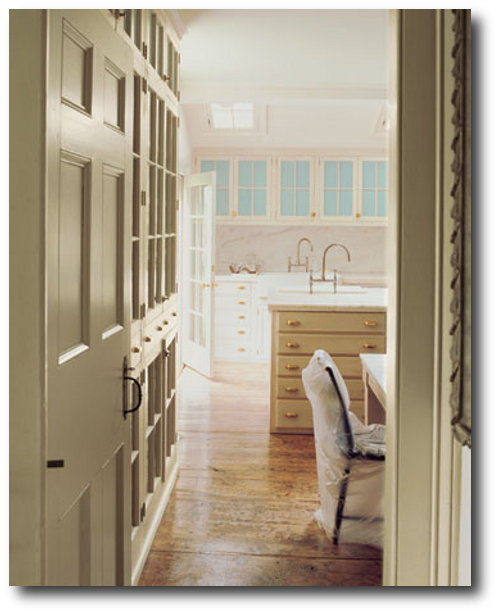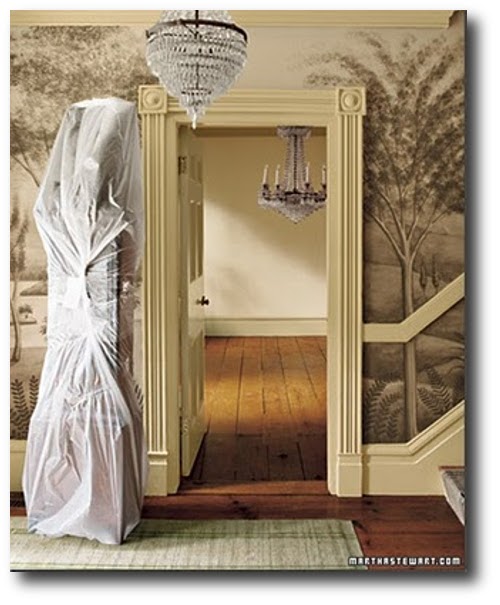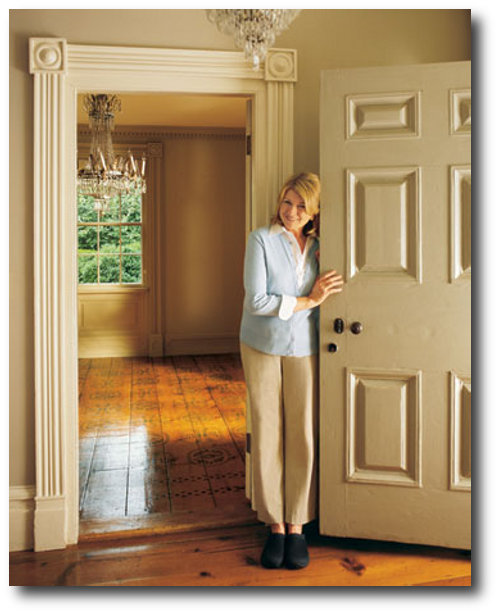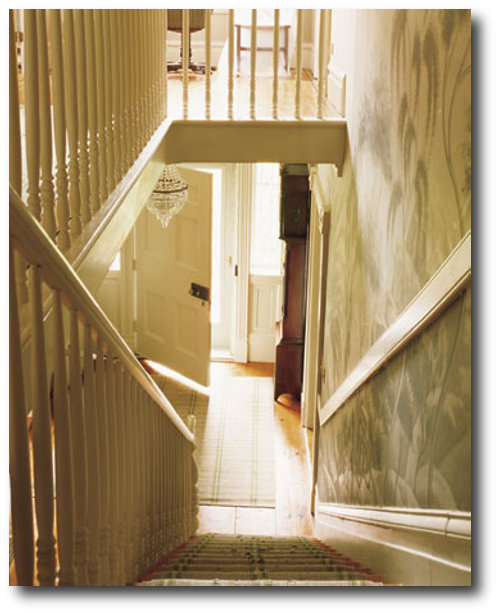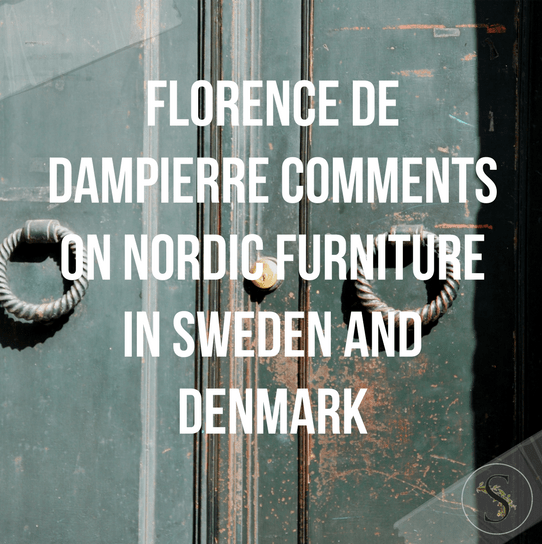
Florence De Dampierre Comments On Nordic Furniture In Sweden And Denmark
Chinoiserie found another outlet in the rare longcase clock at the right, made about 1765 by
Nils Berg, whose signature appears on the case.
The Best Of Painted Furniture By Florence De Dampierre, presents the tradition of painted furniture as it developed in Europe and the United States.
Dampierre, owns a New York gallery which features painted furniture, and specializes in tracing the art form in Italy, Spain, Portugal, England, Germany, Austria, Switzerland, Sweden, Denmark and America. She features French and Italian examples to simpler, more provincial American and northern European folk-art pieces. She talks about how art influenced furniture across Europe, as craftsmen adapted ideas and techniques. Various chapters discuss furniture embellishments and treatments from high art elegance to folk art simplicity.
Here are her comments on Sweden and Denmark:
Two important traditions of painted furniture developed in Sweden: the high-style aristocratic furniture that evolved from the international taste for oriental lacquer beginning in the seventeenth century- and the rural folk tradition, which grew up both in the manors of landowners (where it attempted to imitate its elegant counterpart) and in humble peasant dwellings. As late as the seventeenth century the great houses of Sweden were still closed fortresses—large rectangular structures furnished with imposing, simple chairs and tables. Tastes began to change by the end of the century when the architects Nicodemus Tessin and his son Nicodemus traveled to Italy, where they eagerly embraced the refined luxury of Italian and French styles. As the designers of Drottningholm Castle and the grand castle at Stockholm, the Tessins did much to spread the appreciation of sumptuous high Baroque decoration among the Swedish nobility.
Skane, the southern region of Sweden had painted furniture traditions of it own. Largely
derived from those of Denmark, since it was a Danish province until 1658. Southern pieces, primarily blanket chests and armoires, featured Rococo and Baroque decoration with rose bushes heavily laden with bloom. The Erik Eliasson style of painting spread from Dalecarlia to Skane at the end of the eighteenth century, intermingling with the
southern style.
Other regions invented their own designs. Painters from Delsbo or Jarvsd, in the Dellen Lake district, notably Gustavus Reuter, originated a version of Baroque style painting that was free of influence from other areas. In Jamtlancl (bordering Norway), the armoires, in typically Rococo style, were particularly interesting. In some areas along the seacoast, such as Blekinge, painted furniture was a rarity.
Florence de Dampierre | Facebook
Buy this book from Amazon for as little as $3.99
Picture Credits:
- Sköna hem Magazine
- Holiday Decorating in a Swedish Home Country Living Magazine
- Van Breems joins sons Lars and Martin in the kitchen for an afternoon of cookie-baking.
- Svindersvik, Stockholm, Sweden- Wikimedia.org
- Anders Zorn’s Studio in Mora
- Swedish Painted Trunk Seen At Country Gallery.com
- Country Painted Chest At Milord Antiques.com
- Överkalix Painting, See More At kurbits.nu
- Egeskov Castle In Denmark- www.skyscrapercity.com
- Swedish Painted Mora Clock- Swedish Decorating
- Close up faux painted detail of the clock
- Swedish Hand painted Cabinet Sold through Umbrella Home Decor
- The Best Of Painted Furniture By Florence De Dampierre
- A Swedish, Rococo Chest of Drawers Seller Dawn Hill Antiques
- This table-Liselund castle- made in 1795
- Stool in the neoclassical style seen at Liselund Castle
- The Best Of Painted Furniture By Florence De Dampierre
- Swedish Gustavian Console Table, C. 1810 , D.Larsson Swedish Antiques
- Gård & Torp Photo Karin Foberg
- “Story Time” (portrait of the artist’s father and daughter) by Knut Ekwall (1843 – 1912, Swedish)
- “Hårnäver” a headdress from Norra Ny in Värmland! (Sweden)Her hair is tied up in a red ribbon and she is wearing a hårnäver. This is a kind of diadem that is used as a hair band to keep the hair high up on the fore head. A hårnäver is made from two pieces of birch-bark that are sewn together with long stitches on the back. They are decoratively painted in red or reddish-brown. Matte paint is used to cover the hårnäver and patterns are painted on free-hand. Bark is collected from the birch trees – Found on folkthings.tumblr.com
- Furniture From Nordic Style
- Home of Lisa Larsson- Seen On jessimfine.se
- Svindersvik –Stockholms läns Museum
- Folk art trunk made by Stenström, from the south of Sweden, 1819. Bukowskis Market.com
- Swedish wedding chest with domed top dated 1809 Liveauctioneers
- Blue and White Porcelain Room
- Swedish Door Detail – KML Design.dk
- Mora clock – this is the rare Ångermanland Bride! The cases were made by local carpenters around 1820-1840. – Found on epokantik.com
- Egeskov Castle In Denmark- www.skyscrapercity.com
- Quenselska gården, Åbo, Finland. At that time Finland still was a part of the kingdom of Sweden. Found on sphotos-e.ak.fbcdn.net
- Ornak, A Folk Art Style Villa – See more of this property at Archdeco.org
- Original Painted Swedish Trunk, Dated 1843 Scandinavian Antiques
- Mora Grandfather Clock, circa 1842 Scandinavian Antiques
- Louis XVI Style Carved & Painted Cane Fauteuils Seen On Quality Is Key On Ebay
Swedish Mora Clock From Cupboards And Roses
Found on cupboardsandroses.com
Sköna hem Magazine
Light Green Painted Swedish Mora Clock Cote Jardin Antiques
Decorated Farmhouses of Hälsingland – Life Beyond Tourism
Fjällbacka, Sweden








12 Designers Pick Their Favorite Paint Colors – House Beautiful




House Beautiful often features the best designers with their favorite go-to paint colors. Sometimes having the just-right color can make a tremendous difference in a room, or on a piece of furniture. Here are some of my favorites that work with the classic Gustavian/ Swedish interior design themes.
Ann Wisniewski – Sherwin-Williams Emerald Fawn Brindle SW 7640,
Cathy Kincaid – Farrow & Ball Estate Emulsion Pale Powder 204
Kerry Joyce – Benjamin Moore Natura St. Johns Bay 58
Lisa McDennon – Sherwin-Williams Harmony Conservative Gray SW 6183
Whitney Stewart – C2 LUXE Seedling C2-188
Allison Caccoma – Benjamin Moore Regal Harbor Haze 2136-60
Paul Corrie – Benjamin Moore Regal Select Blue Lace 1625
Ashley Whittaker – Farrow & Ball Estate Eggshell Pink Ground 202
Mara Miller – Ralph Lauren Paint Willow RLVM270
Kevin Isbell – Benjamin Moore Aura Buttered Yam AF-230
Lynn Morgan – Benjamin Moore Advance Nosegay 1401
Deborah Walker Sherwin-Williams Duration Gray Screen SW 7071
Breathtaking Weathered Dining Tables You Can Buy Online
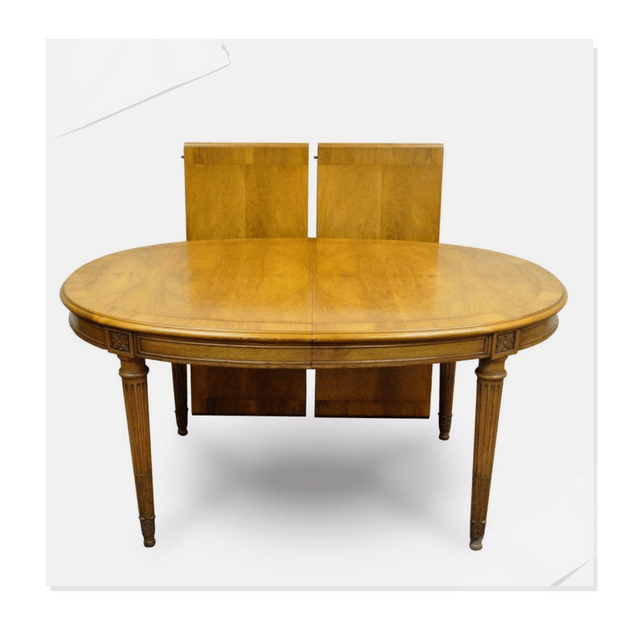
French Louis XVI Directoire Provincial Walnut Dining Table- Quality Is Key On Ebay $765
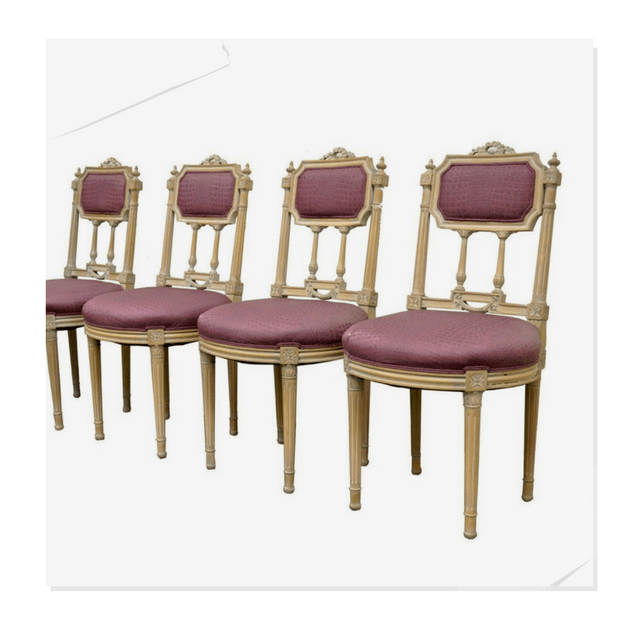
French Louis XVI Style Drape & Bow Carved Painted Dining Chairs $1436 Quality Is Key On Ebay
Consider this stunning Maison table available from World Bazaar Exotics on ebay, listed at $1,188 for your Swedish Gustavian styled home.
Dimensions: 48″ Version: 48W X 47D X 31H, 68W with leaf, 72″ Version: 72W X 47D X 31H, 92W with leaf
This outstanding table with timeless 18th century style is crafted out of solid oak with aged finishing techniques that will surely impress you and all your guests. This deep grey finish will work quite perfectly in a Gustavian styled home. This table includes one 20″ drop-in leaf extension.
Restoration Hardware also sold a very comparable table inspired by 19th-century French Empire design. RH’s table is also built from solid oak, and had a full skirt and slender tapered fluted legs. A weathered finish also lends itself to a look that has been aged for years. RH’s price ranges from $695 – $1495
Restoration Hardware’s French Oval Table
Gustavian Oval Gate Leg Table
Gustavian furnishings have an uncanny ability to express serious sophistication without ever veering into the indulgent, foo-foo, or precious. This oval dining room table is a classic example of serious form following the functionality that only a drop leaf surface can provide. Whether placed in a loft of cottage, city apartment or large estate, this piece just works. 31 inches high x 63 inches wide x 77.5 inches long
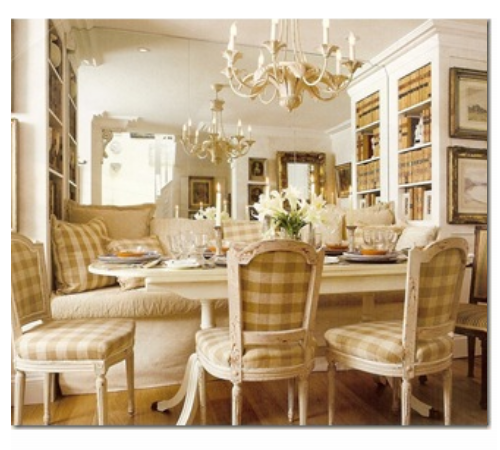
Swedish Dining From Traditional Home, April 2007
French Country Louis Dining Table $3,348
A graceful 18th century style piece reminiscent of the French country aesthetic, this generous dining table will please those devoted to beauty and simplicity. Fashioned from solid oak and elm, the rounded edges and legs create a gentle, rustic effect.
Beautiful White Rent Table – Seen In The Home of Shannon Bowers
Carl Larsson Table From The Gustavian Collection
Louis Extension Dining Table French White Solid Hardwood- Buy it on Ebay
The Napoleon collection faithfully captures the romantic feel of vintage, painted furniture from the French countryside. Featuring gently curved frames made of solid hardwood, brightly colored then rubbed down on the edges. Adds a soft splash of vibrance to any setting. $2,200.00 71″ to 91″ x 43″ x 30″, (91″ fully extended ) Oak wood
Harlequin Set of Twelve French Dining Chairs in Grey Linen Antony Tood
Linley Heavy Distress Farm House 14 Person Trestle Dining Table $3,938.00
The Perfectly Imperfect Home: How to Decorate and Live Well
